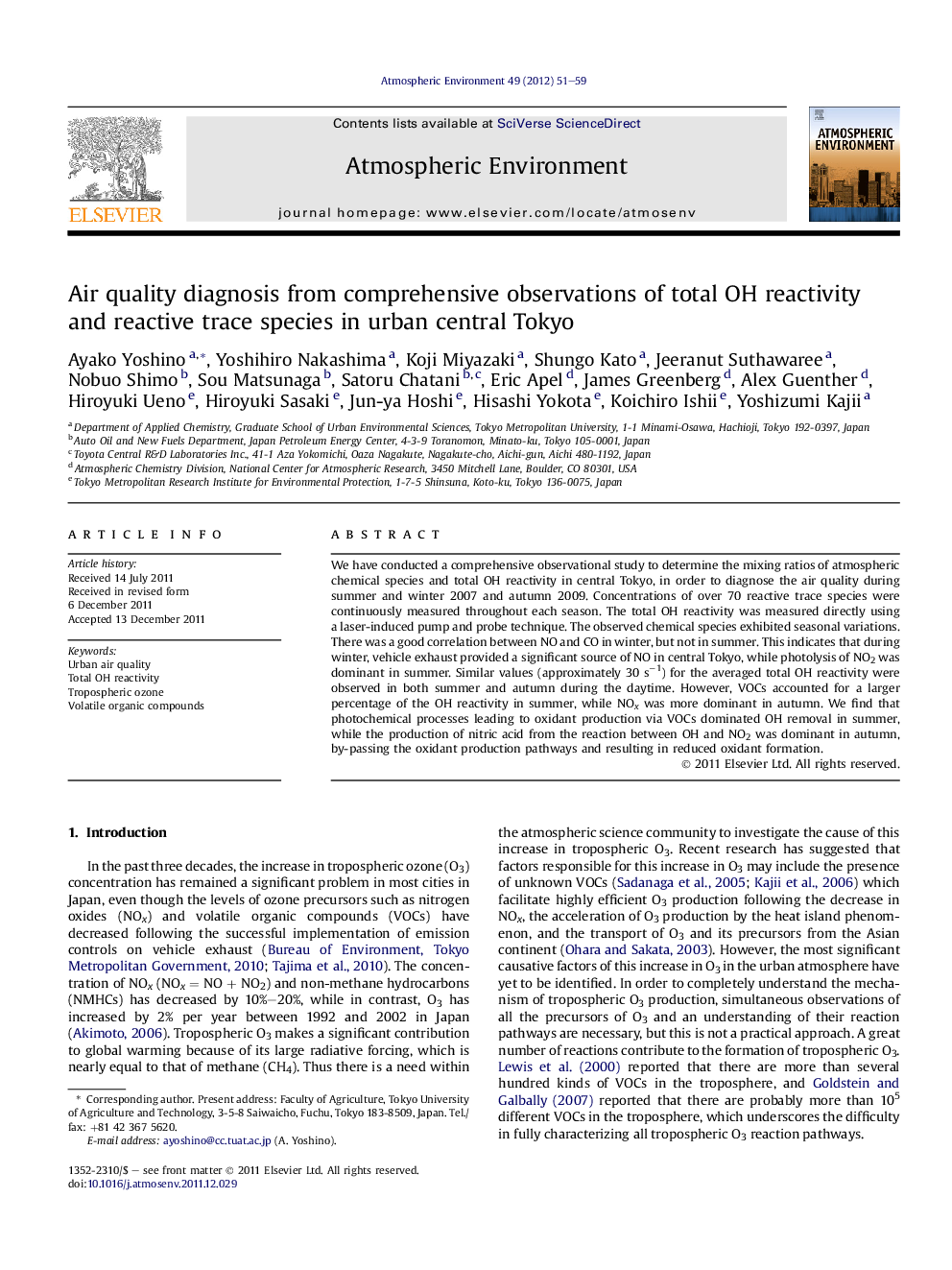| Article ID | Journal | Published Year | Pages | File Type |
|---|---|---|---|---|
| 4439062 | Atmospheric Environment | 2012 | 9 Pages |
We have conducted a comprehensive observational study to determine the mixing ratios of atmospheric chemical species and total OH reactivity in central Tokyo, in order to diagnose the air quality during summer and winter 2007 and autumn 2009. Concentrations of over 70 reactive trace species were continuously measured throughout each season. The total OH reactivity was measured directly using a laser-induced pump and probe technique. The observed chemical species exhibited seasonal variations. There was a good correlation between NO and CO in winter, but not in summer. This indicates that during winter, vehicle exhaust provided a significant source of NO in central Tokyo, while photolysis of NO2 was dominant in summer. Similar values (approximately 30 s−1) for the averaged total OH reactivity were observed in both summer and autumn during the daytime. However, VOCs accounted for a larger percentage of the OH reactivity in summer, while NOx was more dominant in autumn. We find that photochemical processes leading to oxidant production via VOCs dominated OH removal in summer, while the production of nitric acid from the reaction between OH and NO2 was dominant in autumn, by-passing the oxidant production pathways and resulting in reduced oxidant formation.
► Comprehensive observations in central Tokyo have conducted to diagnose air quality. ► Atmospheric trace species and total OH reactivity were observed simultaneously. ► NOx accounted for a large contribution to OH reactivity in autumn. ► VOCs accounted for a large percentage of the OH reactivity in summer. ► Different dominant processes in atmospheric reactions depend on season are present.
